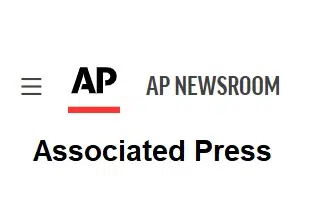AUGUST 2, 2024:
BORDULAC, N.D. (AP) — The fiery North Dakota derailment that burned for days early last month was the latest train crash to involve the flawed tank cars that the National Transportation Safety Board has been trying to get off the tracks for decades.
The NTSB said in a preliminary report released Thursday (Aug. 1, 2024) that the July 5, 2024, train crash near the small town of Bordulac, North Dakota, caused an estimated $3.6 million in damage to the CPKC railroad tracks and equipment. But the agency didn’t offer many hints about what caused the derailment that happened in the early morning hours that day.
CPKC railroad officials are prohibited from answering questions about the derailment while NTSB is investigating.
The NTSB highlighted the fact that some of the 17 tank cars carrying hazardous materials that derailed were DOT-111 tank cars that have demonstrated time and again that they are prone to rupturing in a train crash. The agency has been recommending eliminating the use of those cars for hazardous materials at least since the 1990s because of their history of problems, and Congress did mandate that they be replaced for hauling flammable liquids by 2029. But even then they could continue to be used for other hazardous materials.
Officials at the Federal Railroad Administration have said it might be possible to move up that deadline by a year, but probably not much more than that because tank car manufacturers don’t have the capacity to do it sooner. There is also a significant cost for the chemical and leasing companies that own them to replacing a tank car.
The NTSB said it will be doing a detailed damage assessment on the DOT-111 tank cars and the more robust newer models of tank cars that were involved in this crash as part of its investigation over the next year or more. Recently, investigators highlighted the way those tank cars worsened the disastrous Norfolk Southern derailment in East Palestine, Ohio, last year when they ruptured and spilled butyl acrylate, fueling a massive fire that prompted officials to needlessly blow open five tank cars of vinyl chloride to prevent a feared explosion.
In the North Dakota crash, it was fortunate that few people lived nearby. Only two homes were voluntarily evacuated for two days while crews put out the fires and dealt with the methanol and anhydrous ammonia that spilled. A dozen of the other cars that derailed were carrying plastic pellets.
No injuries were reported in the derailment itself.
The NTSB said an emergency brake application was done on the train before it derailed, but it didn’t say whether the two-person crew did that or whether the brakes were triggered automatically.
The 151-car train was going about 45 mph (73 kph) when it derailed — which was below the 50 mph (80 kph) speed limit for it since it was carrying a number of hazardous materials cars.
JULY 8, 2024:
BORDULAC, N.D. (AP) — All of the rail cars that contained hazardous materials have been removed from the site of a derailment in North Dakota, and all hotspots from the resulting fire have been extinguished, an official with CPKC said Monday (July 8, 2024).
Railroad spokesman Patrick Waldron said in an email that track repairs were completed early Monday, and rail traffic resumed following track safety inspections.
No one was injured in the pre-dawn Friday derailment, which knocked 29 CPKC train cars off the tracks in a marshy area surrounded by farmland about 140 miles (225 kilometers) northwest of Fargo, officials said.
The train was carrying anhydrous ammonia and other hazardous materials. Officials on Sunday briefly issued a shelter-in-place notice for area residents after air monitors detected low levels of anhydrous ammonia, said Andrew Kirking, emergency management coordinator for Stutsman and Foster counties in east-central North Dakota.
No injuries from the leak were reported, and the notice was lifted later Sunday when air monitoring levels returned to zero, Kirking said.
Exposure to high concentrations of ammonia in the air can cause burning of the eyes, nose, throat and respiratory tract, and can result in blindness, lung damage or death, health officials say. Exposure to lower amounts can result in coughing and irritation of the nose and throat.
The National Transportation Safety Board and Federal Railroad Administration is investigating the cause of the derailment.

